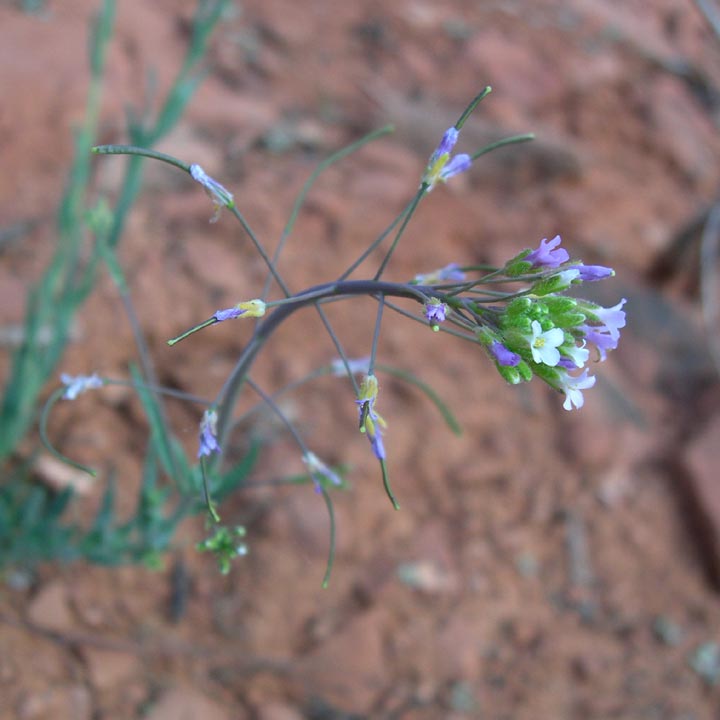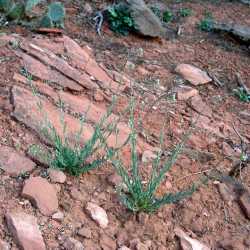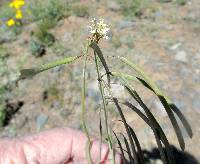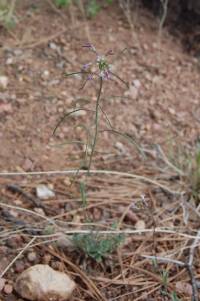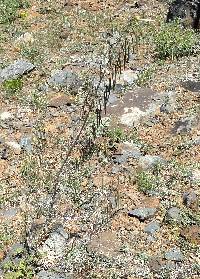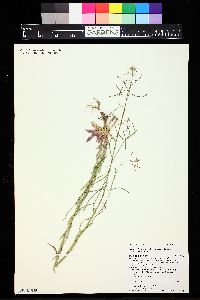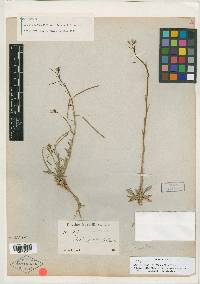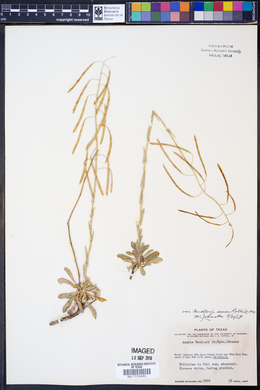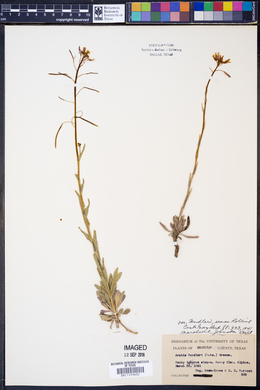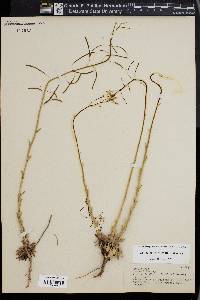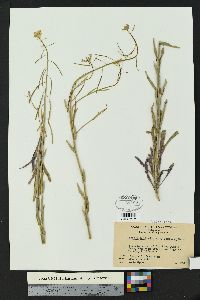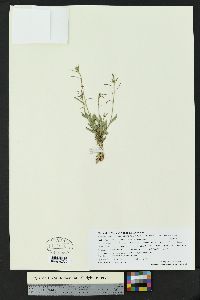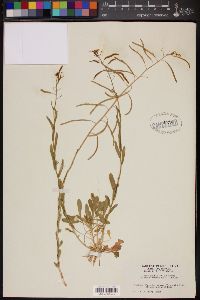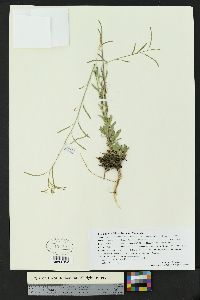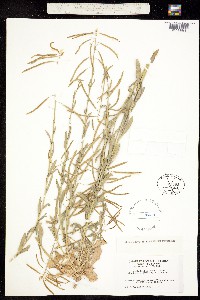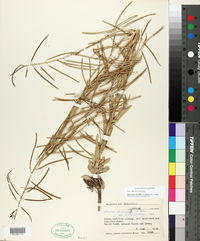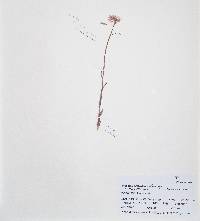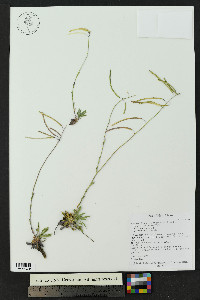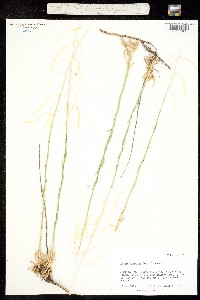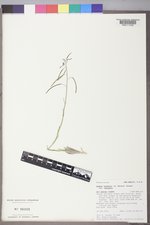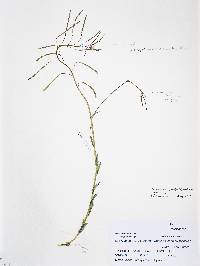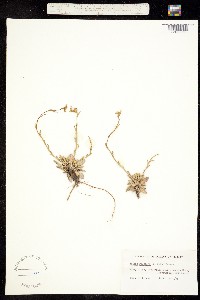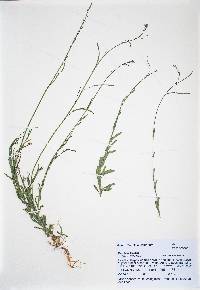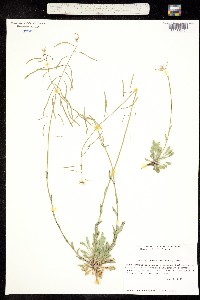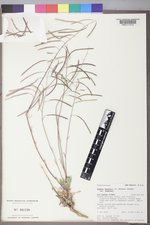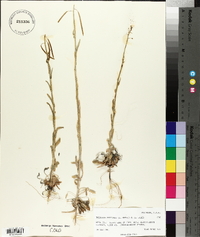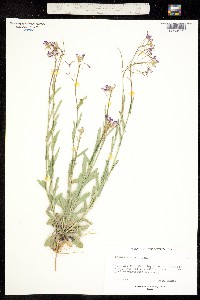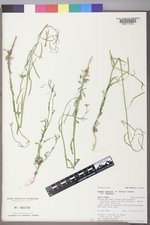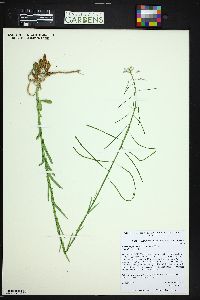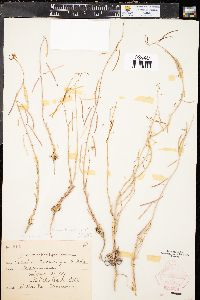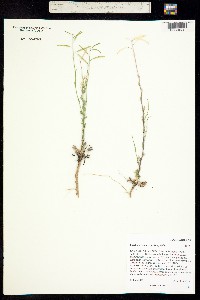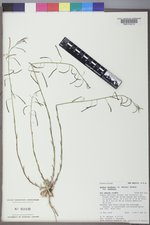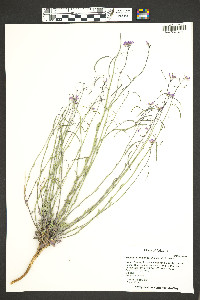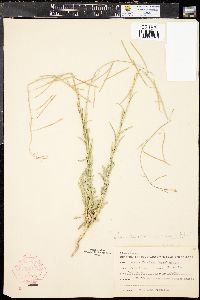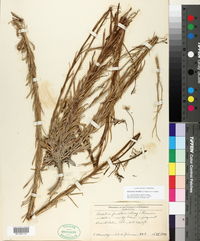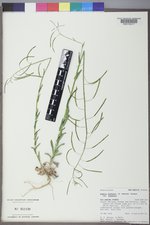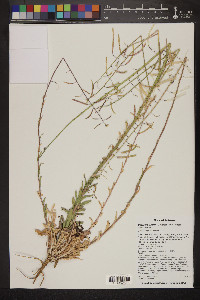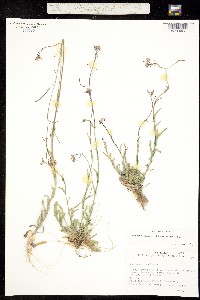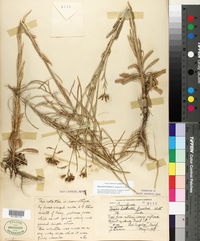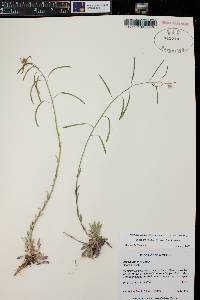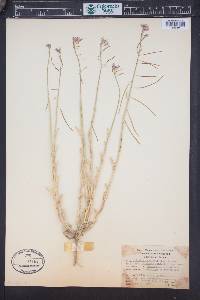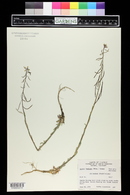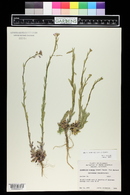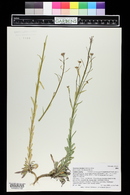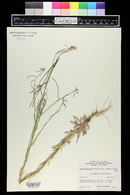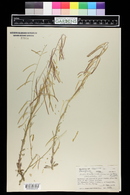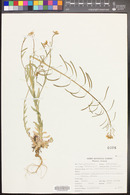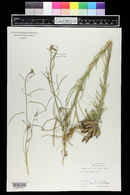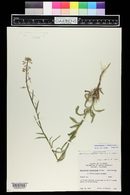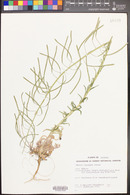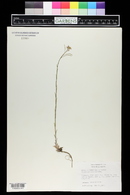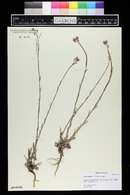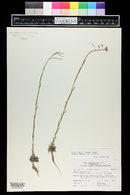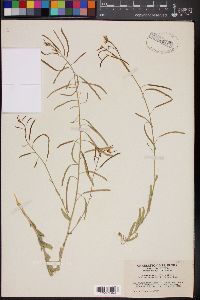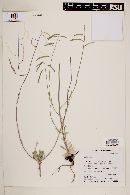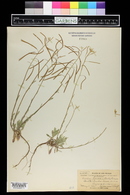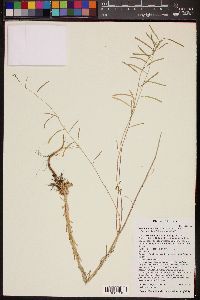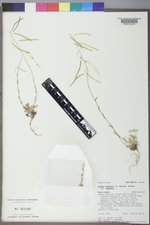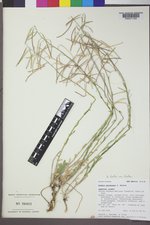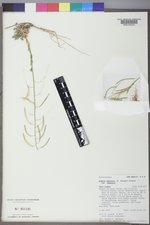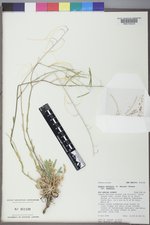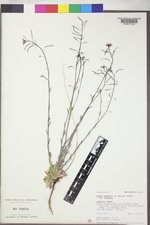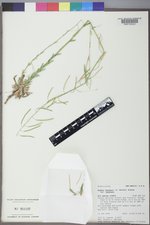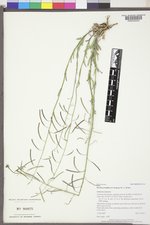Boechera fendleri
|
|
|
|
Family: Brassicaceae
Fendler's rockcress, more...Fendler's Rockcress, Fendler's rockcress
[Arabis fendleri (S. Watson) Greene, moreArabis fendleri var. fendleri , Arabis holboellii var. fendleri S. Watson] |
Perennials; short- to long-lived; sexual; caudex usually not woody (rarely with persistent, crowded leaf bases). Stems simple or few to several per caudex branch, arising from center of rosette near ground surface, 1.5-3.5(-5) dm, densely pubescent proximally, trichomes simple mixed with short-stalked ones, 2-rayed, 0.3-0.7 mm. Basal leaves: blade narrowly oblanceolate, 1.5-3(-4) mm wide, margins entire, strongly ciliate at least along petiole, trichomes (simple), to 1 mm, surfaces glabrous or sparsely pubescent, trichomes simple and short-stalked, 2-rayed, 0.3-0.7 mm. Cauline leaves: 5-15(-20), often concealing stem proximally; blade auricles 0.5-1.5 mm, surfaces of distalmost leaves usually glabrous. Racemes 10-30-flowered, usually unbranched. Fruiting pedicels horizontal or slightly descending, curved or angled downward, 6-10(-15) mm, usually glabrous, rarely sparsely pubescent, trichomes spreading, simple. Flowers divaricate-ascending at anthesis; sepals pubescent; petals usually white, rarely pale lavender, 3-3.7(-4) × 0.5-0.8 mm, glabrous; pollen ellipsoid. Fruits pendent, not appressed to rachis, rarely slightly secund, straight or gently curved, edges parallel, 3.3-5.7 cm × 1.2-1.8 mm; valves glabrous; ovules 90-126 per ovary; style 0.1-0.4 mm. Seeds biseriate, 0.7-0.9 × 0.5-0.6 mm; wing distal or, sometimes, absent, 0.05-0.1 mm wide. 2n = 14. Flowering May-Aug. Rocky slopes and gravelly soil in sagebrush, pinyon-juniper woodlands, open conifer forests and subalpine meadows; 1800-2800 m; Colo., N.Mex. Boechera spatifolia is a sexual diploid that usually has been treated as a variety of Arabis (Boechera) fendleri but appears to be sufficiently distinct to warrant recognition at species level (see M. D. Windham and I. A. Al-Shehbaz 2006 for detailed comparison). There is little geographic overlap between the two, with B. spatifolia confined to the mountains of central Colorado and north-central New Mexico and B. fendleri ranging from western New Mexico and the Four Corners region through northern Arizona to southern Nevada.
FNA 2010, Allred and Ivey 2012, Heil et al. 2013 Duration: Perennial Nativity: Native Lifeform: Forb/Herb General: Perennial herbs, 15-50 cm tall, from a woody taproot or branched caudex; stems one to several per caudex branch, arising from the center or side of a rosette of leaves near the ground surface; lower portions of the stems pubescent with mostly simple (unbranched) hairs. Leaves: Forming distinct basal rosettes and also alternate along the stems; basal blades narrowly oblanceolate, 4-10 mm wide, tapering to petioles, the blades and petioles covered with simple and 2-forked hairs; blades of stem leaves smaller, sessile, with wings clasping the stem (auricles); uppermost leaves usually glabrous. Flowers: White to pale lavender, in terminal racemes of 6-75 flowers on pedicels 1-2 cm long, the pedicels ascending in flower and spreading when in fruit; petals 4 in a cross formation, spatulate or oblanceolate, 5-9 mm long, whitish to lavender; sepals 4, ovate or oblong, greenish to dull lavender, sparsely pubescent. Fruits: Capsules linear, 3-6 cm long and 1-2 mm wide, straight or gently curved, glabrous and widely pendant, sometimes with withered flowers still at their bases and persistent styles; seeds 1 mm long and 0.1 mm wide, sometimes with wings, in 2 rows per locule. Ecology: Found on gravelly soils, rocky slopes, and roadsides, in sagebrush, piyon-juniper woodlands, open conifer forests, and subalpine meadows, from 6,000-9,000 ft (1829-2743 m); flowers May-August. Distribution: AZ, CO, NV, NM, UT Notes: Because of hybridization, polyploidy, and self-fertilization, Boechera is an extremely problematic group. There have been several re-organizations of this group over the years (including splitting it out from the genus Arabis). For simplicity it is better to use a recent treatment to identify your plants; this description is based on the Flora of North America treatment (2010) and the key divisions in the Flora Neomexicana (Allred and Ivey 2012). B. fendleri is incredibly common in the four-corners region and throughout the western two-thirds of New Mexico, so if you are trying to identify a Boechera, this is a good guess. Look for tall stems arising from the center or sides of distinctive basal clusters of petioled, spatulate leaves. The flowers are upward-pointing, and have white to lavender petals and green to purplish sepals. The fruits are long narrow capsules on spreading pedicels that allow the capsules to dangle a bit. Distinguish from B. porphyrea based on the sepals; B. porphyrea has hairless sepals and B. fendleri has sparsely hairy sepals (use your hand lens). Distinguish from several other Boechera spp. based on the hairs on the stems. B. fendleri has simple (unbranched) hairs on the lower stems, while B. perennans, B. gracilenta, and B. lignifera have mostly stellate hairs with 2-10 rays on the lower stems. Ethnobotany: Unknown Etymology: Boechera is named after Tyge Wittrock Boecher (1909-1983), born in Copenhagen, an authority on Arctic vegetation and the flora of Greenland who also worked in Argentina; fendleri is named for August(us) Fendler (1813-1883), a German plant collector in North and Central America. Editor: LCrumbacher2012, AHazelton 2017 |

